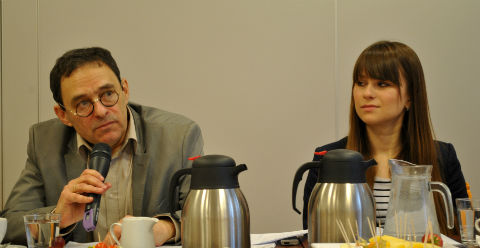Transformation of the school network in the years 2007-2012
- Published on Tuesday, 18 March 2014 01:26
A report summarising the transformation of the school network in the years 2007-2012 was presented today by IBE researchers. In 2007-2012 local governments closed nearly a thousand schools.
 Jan Herczyński, PhD, and Aneta Sobotka presenting the report "Diagnosis of the changes in the network of primary and secondary schools in Poland, 2007-2012."
Jan Herczyński, PhD, and Aneta Sobotka presenting the report "Diagnosis of the changes in the network of primary and secondary schools in Poland, 2007-2012."
At the confrence in IBE, Jan Herczyński, PhD, and Aneta Sobotka presented the results of their study "Diagnosis of the changes in the network of primary and secondary schools in Poland, 2007-2012." The report is the first of its kind in Poland. The press conference was opened by Michał Sitek, PhD, Deputy Director for Research at IBE.
"The fact that the number of schools in Poland has been steadily declining is well known from statistical data. But how many schools were actually closed is not so easy to tell," said Mr Herczyński. "We have developed tools that allow researchers to explore what's really going on with the schools."
IBE researcher outlined the key findings of the study. "The number of primary school students has fallen by about 10 percent, and similarly, the number of primary schools decreased by about 10 percent. At the same time the number of lower secondary school students (gimnazjum) dropped by about 20 percent. But municipalities didn't close lower secondary schools," he said. He explained that this was largely due to the fact that the network of lower secondary schools was designed in a much more rational way.
According to Mr Herczyński, the data collected in the report proves that local governments are very rational in transforming the school network. "The local governments received significant power in this area and are very reasonable in making use of it," he said. "Facilities that were closed were really small schools, with an average population of 20 students."
Co-author of the report - Aneta Sobotka - presented different formation pathways of school complexes consisting of a primary and a lower-secodnary school. She also pointed to the so-called "election year hypothesis". Based on the data that the team collected, limited to the selected local elections in 2010, it was clear that fewer governments take decisions related to the transformation or closing of schools in the election years.







